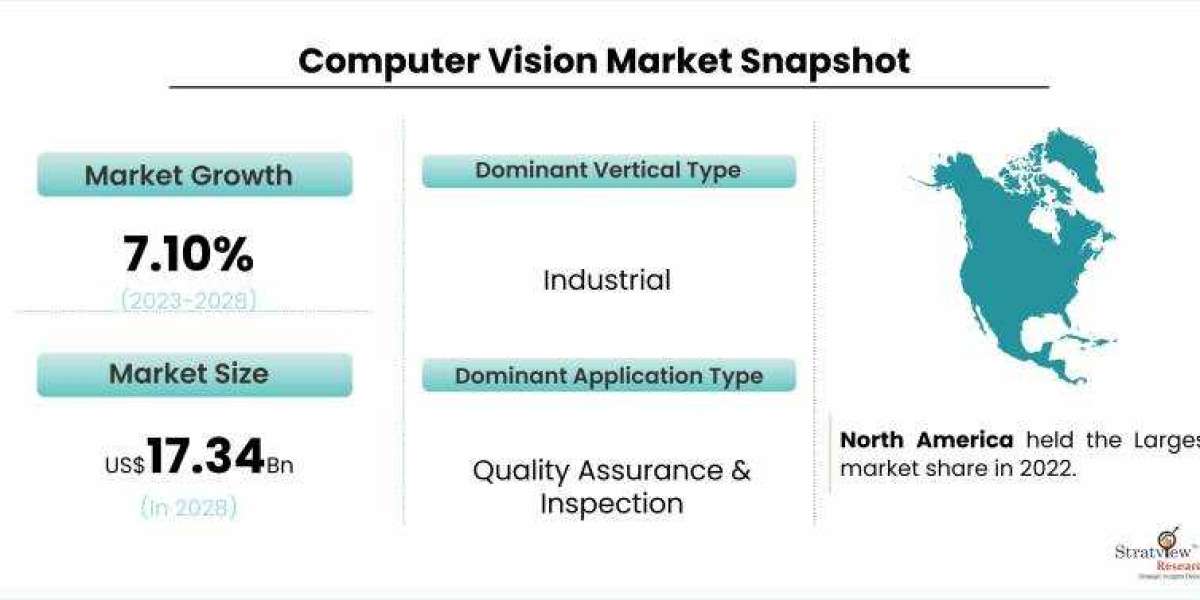In recent years, computer vision has emerged as a powerful technology that has revolutionized various industries. By enabling machines to analyze and understand visual data, computer vision has opened up new possibilities and applications across different sectors. This blog post will explore the growing role of computer vision in industries and provide a market analysis of its current and future potential.
Market Analysis
The market for computer vision technology has experienced significant growth and is projected to continue expanding in the coming years. According to market research reports by Stratview research, the computer vision market is estimated to grow from USD 11.45 billion in 2022 to USD 17.34 billion by 2028 at a CAGR of 7.10% during the forecast period.
Manufacturing and Industrial Automation
Computer vision has played a crucial role in transforming manufacturing and industrial processes. It enables automated quality control, defect detection, and object recognition, improving production efficiency and reducing costs. By integrating computer vision systems into assembly lines, manufacturers can ensure consistent product quality, leading to enhanced customer satisfaction.
Healthcare and Medical Imaging
Computer vision has immense potential in healthcare, particularly in medical imaging and diagnostics. It assists doctors in analyzing and interpreting complex medical images, such as X-rays, MRIs, and CT scans. Computer vision algorithms can quickly detect abnormalities, assist in early diagnosis, and provide more accurate treatment planning, ultimately improving patient care.
Retail and E-commerce
The retail industry has embraced computer vision to enhance customer experiences and optimize business operations. Computer vision enables cashier-less checkout systems, where customers can simply pick up items and walk out of the store, eliminating the need for traditional checkouts. Additionally, computer vision technology enables personalized shopping experiences, inventory management, and real-time monitoring of foot traffic and customer behavior.
Autonomous Vehicles
Computer vision is a fundamental technology for autonomous vehicles. It enables self-driving cars to understand their surroundings, detect and track objects, and make informed decisions in real time. By integrating computer vision with other technologies like lidar and radar, autonomous vehicles can navigate safely and efficiently, promising a future of enhanced road safety and reduced traffic congestion.
Security and Surveillance
Computer vision is widely used in security and surveillance applications, such as facial recognition, object tracking, and anomaly detection. It helps in identifying potential threats, monitoring public spaces, and enhancing overall safety and security. With the increasing demand for intelligent video analytics, the adoption of computer vision in security systems is expected to grow significantly.
Conclusion
The growing role of computer vision in industries is undeniable, as it continues to revolutionize various sectors with its ability to interpret visual data. From manufacturing to healthcare, retail to autonomous vehicles, computer vision has proven its potential to enhance efficiency, improve accuracy, and drive innovation. As technology advances further, we can expect even more exciting applications and transformative changes in the industrial landscape. Embracing computer vision will undoubtedly be a key factor for businesses to stay competitive and thrive in the future.














